So today I bring to you another post about the crystal fakes + frauds out there in Crystal-land. After the last post on the subject, I got lots of questions about others so here are a few more popular ones for you to be aware of.
Amber/Copal Crystal Fakes
Amber (not technically a mineral or crystal since it has organic origins) is supposed to be super-duper expensive, right? So why all this cheap stuff on the market?
Well, that cheap stuff is most likely plastic (ick!!) or copal, pronounced “coh-PAHL”. Copal is often sold as “amber”, but it’s not. Although it is very similar, it’s not amber. Here’s why:
- Amber is the fossilized (40-60 million years old) hardened resin from a now extinct pine tree.
- Copal, on the other hand, is hardened immature recent resin (only 1000 – 1 million years old). Copal is technically almost the same thing, just not as old & the names are often used interchangeably.
BUT, “almost” is not the same and the slight variation makes a huge difference in price! A reputable seller will make sure to note that copal is not true amber.
Sometimes what you think is amber may not even be copal but may be glass, synthetic resins or plastic!
Why is real amber so expensive?
Well, that depends on several things:
- how rare that type of amber is
- it’s age
- color
- whether it has any included insects (remember that Mosquito trapped in amber from Jurassic Park that they got the dino-DNA from? ….which is totally impossible BTW!)
So the value of amber is related to its scarcity, age, possible inclusions of extinct species & durability.
Here are some tests you can do to see if you have a plastic fake, copal or the real deal:
- Smell test – real amber has a distinct pine scent after heating. Copal will have a “sweet” resin smell but it’s not pine.
- Solvent test – Copal & plastic fakes won’t pass this test but it will damage your piece. Drip a few drops of nail polish remover (acetone) on your piece…if it gets tacky or sticky & the solvent takes on the color of the piece, sorry…it’s not amber. Real amber won’t bat an eyelash over this.
- Melt test – Real amber doesn’t melt, it burns. Copal & plastics will melt at a relatively low temperature (lower than 150 C/300F ). Yes, this is the same copal many burn as a lovely resin (emits a sweet scent it when burned.) If it’s plastic, acccck!! The smell will be horrible! *learned the hard way*
- Hot needle test– the tip of a hot needle will burn real amber, but copal or the fakes will melt, so best to try this on an area that no one will see as this will damage your piece too.
- Float test – Amber + copal both will float in saltwater. That’s why it’s so easy to harvest amber along the beach of the Baltic Sea… locals will find it washed up on beaches, especially after storm events. The amber gets stirred up from a layer known as “blue earth”, which is beneath layers of silt + clay on the ocean floor. To do this test, mix about 1 part salt to 2 parts water and dissolve the salt completely. Drop your piece into the mixture. Plastic or glass will sink, while amber or copal floats.
Amber also has some cool electrical properties that I wrote about a while back too. Amber + copal will get a negative electric charge while glass will be positively charged.
Plastics will also be charged negatively like amber. Soooo…I don’t recommend using this property to test.
Amber and copal have very similar healing properties of aligning with the solar plexus chakra and inviting in a sunny disposition. However, amber is more powerful than copal.
Irradiated Crystal Fakes
Irradiation of mineral specimens is a pretty common thing. You may not realize it but many gemstones on the market are irradiated to get a more vibrant or deeper color.
Is it dangerous?
Yeah, I’d try to steer clear of them:
- deeply pigmented topaz
- artificially dark (almost black) smokey quartz
- very deep hot pink or red tourmaline
- colored diamonds
- deeply colored kunzite
- some cultured pearls
- vibrant yellow heliodor (irradiated pal aquamarine)
Some sellers choose to take milky quartz & subject it to gamma-ray radiation normally used to clean germs from medical equipment & food (oh yeah…that’s gamma-ray RADIATION on your food….sheesh!).
Anyway, back on topic.
So, when they radiate the milky quartz with the gamma rays you get a deeply pigmented, almost smoky quartz that’s almost entirely opaque like the 1 I show here while I was shopping in Tucson in 2012. BTW, Ron Coleman’s Mine will tell you (if you ask) that their smokey’s are irradiated:
Size Does Matter in Crystal Healing – Tucson 2012!
BTW, quartz colored by natural radiation from Mama Earth is not radioactive & is safe to carry. Yes, Mother Earth NATURALLY radiates quartz that’s included with some aluminum to create smokey quartz but this is a slower, gentler process. I explain more about that here:
Crystal Healing with Smokey Quartz
One telltale sign of an artificially irradiated smokey is that the color fades FAST when exposed to sunlight whereas a natural smokey will retain it’s color longer.
If the seller tells you it’s from Arkansas, raise your eyebrows way up high because smokeys usually don’t occur there + they certainly won’t be very dark like I explain in the vid above.
Now don’t confuse dark irradiated quartz with Morion quartz.
This dreamy stuff just recently came on the scene. It’s a deeply colored, black quartz only occurs in and around volcanic rocks. These babies are RARE & formed by natural radiation caused by nearby uranium deposits from South Africa or in Poland. Natural Morion quartz retains some translucence when held up to the light as you can see in my pic below.
Rainbow Cal-Silica or Calsilica Crystal Fakes
Rainbow Calsilica is bogus.
Turns out it’s calcite ground up and mixed in with car or tile paint, plastic, and resin!! YEAH! YUCKO!!
Some sellers will INSIST that it’s a naturally occurring stone, but there’s very little evidence to back it up. With some digging, I turned up a juicy document by the Swiss Gemological Institute who did the proper testing, and proved it’s a fake.
So that’s THAT! Stop the squabbling. We’re done.
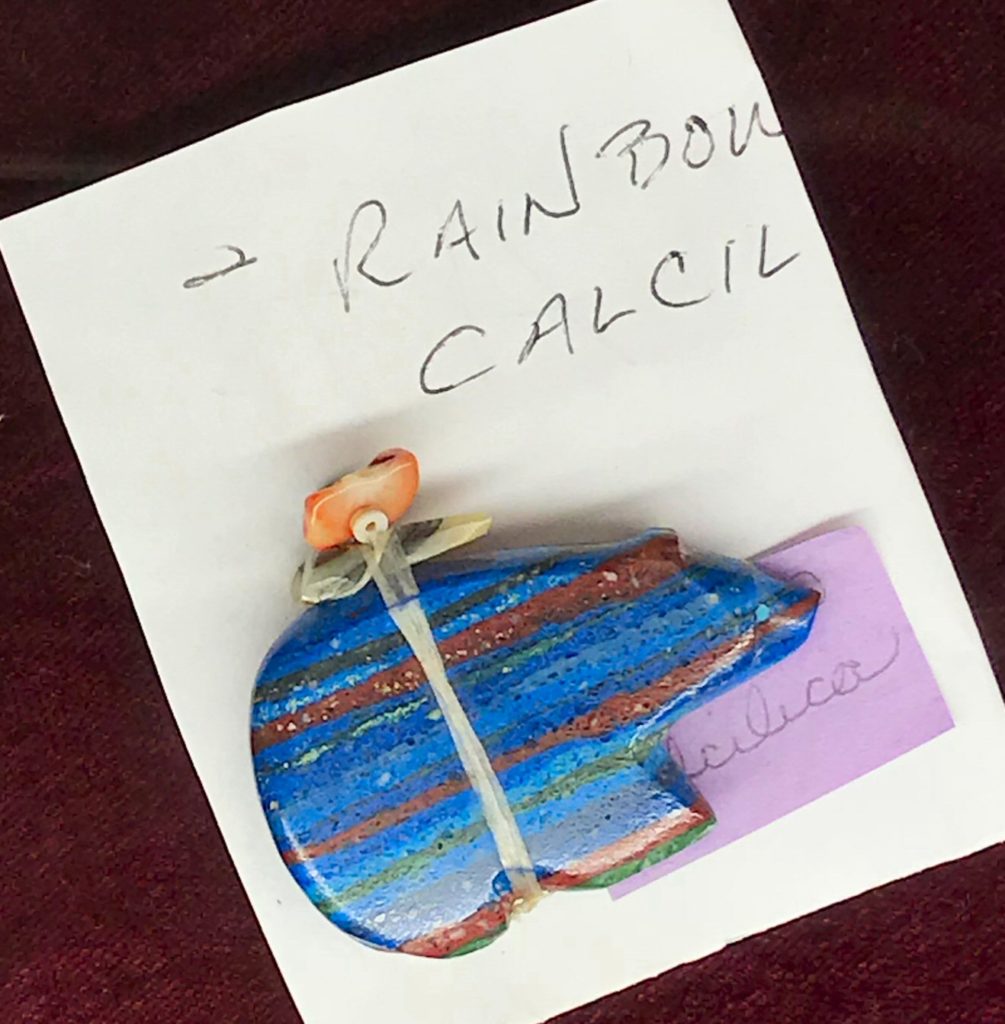
Who are you buying from? Are they reputable & do they know what they’re talking about? Be informed & cautious.
Happy Crystal Buying.

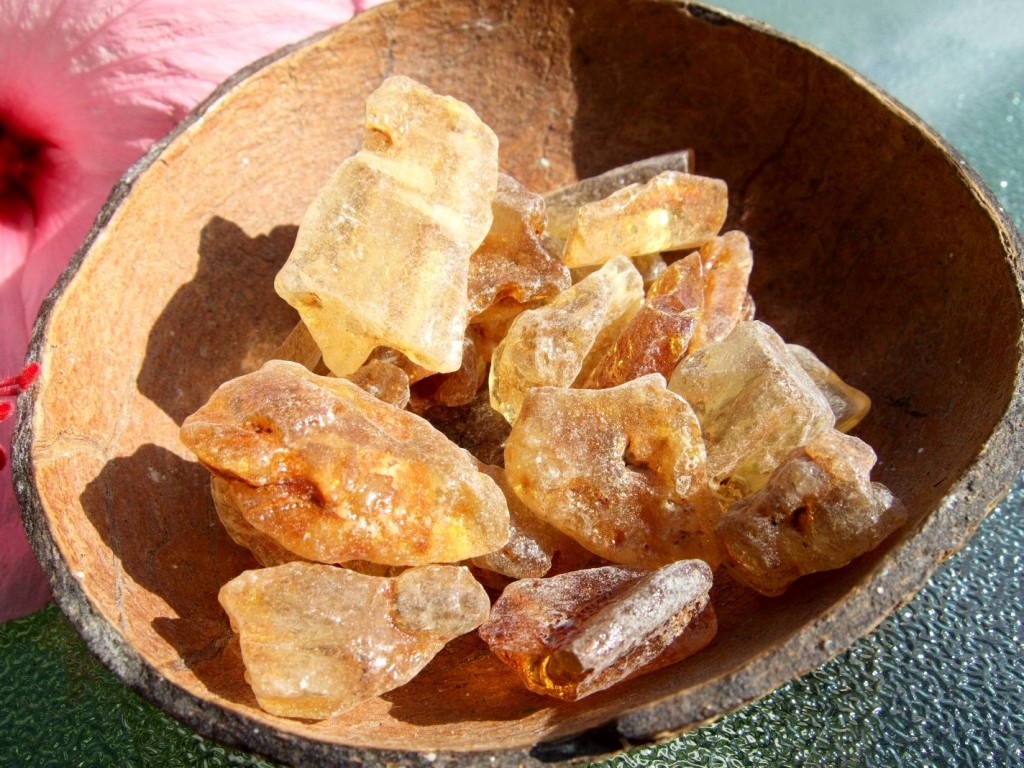
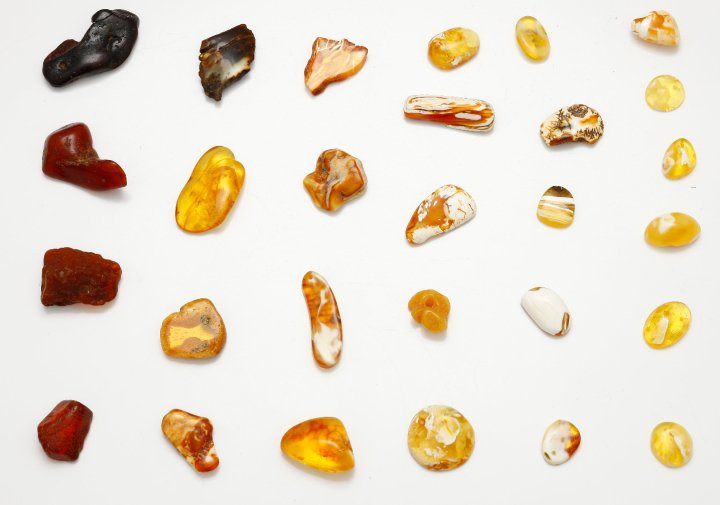
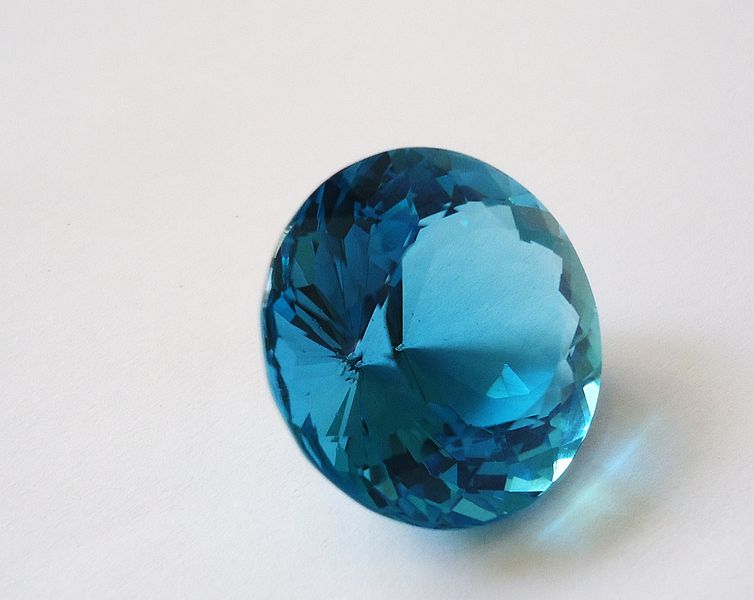
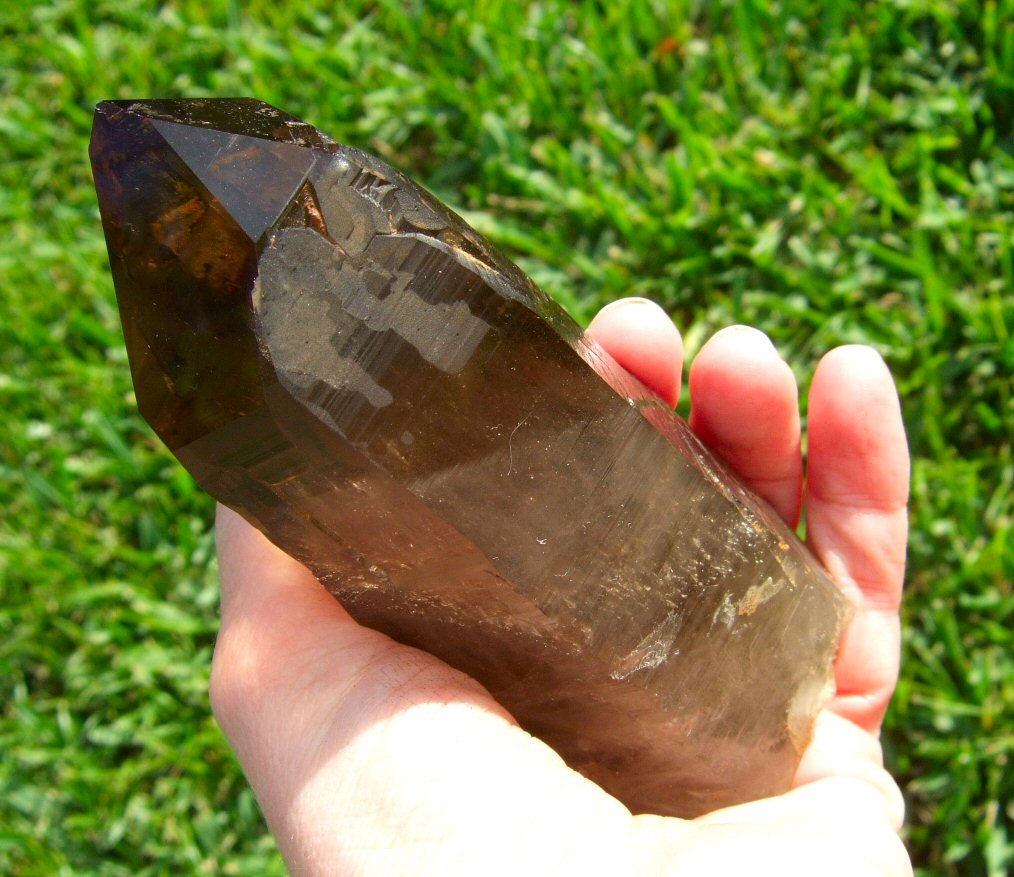


Thank you, Hibiscus for these Amber tests – I was able to figure out if a few of the pieces I had acquired over the years were the real deal!
YES! Which test was the most helpful?
I tried the smell test but my amber didn’t smell like pine or anything. So then I did a solvent test with acetone. Then I did the melt test. And finally I did the float test. Passed all except smell with flying colors!
I tested the amber I have with the float test. It passed. Is there any test for moldavite? I’ve read (maybe here?) that green pitted glass is being sold as moldavite for a big price. I have a suspicious piece…
I agree! I would be interested in a Moldavite test as well.
Here’s my post on moldavite: https://hibiscusmoon.com/moldavite-out-of-this-world/
I read that post. And I looked through my loupe but I’m not sure if I’m seeing tiny worm holes. 🙂 That sounds weird. Maybe I’ll hunt for Google images and see if there are any magnified photos….?
T
I don’t know who lovemyheart is, sorry – that’s me, tls.
What do you do with an irradiated smokey crystal? I bought it from Ron Coleman’s Mine not realizing that it was irridiated…Can it be returned to the earth?
I have some “smokey quarts” purchased from a dealer out of Arkansas. This quartz actually has a grayish hue to it, and looks nothing like the crystals you are showing. So yeah, should have done my research on that one.
But my question is, I have also purchased what is labeled as “smokey citrine.” This looks almost exactly like the crystals you’ve shown. How does one tell the difference?
PS. THANK YOU for the amber test! I was able to determine that the amber necklace I purchased for my daughter is the real deal, while the amber pieces I’ve ordered for myself are in face copal.
*On a side note, I did some research on copal and while it is not true amber, it is still a naturally occurring hardened resin, and does carry it’s own metaphysical properties. Though, they are not the same as amber. Good to know!
My amber passed the float test. 😀
I’d love a post like this about jade; how to spot the real thing and identify the fakes.
Hi, Hibiscus moon, nice to meet you! it´s my firts time here! like too much your site, is very informative, very good!
I really want to buy a lepidolite crystal, but don´t know about fake lepidolite, and ask for your help, can you help me?
I´m brazilian, and here it´s very difficult find any information about fake crystals, and read your blog, I´m discovered I´m bought fake amber, fake goldstone too, etc.
so ask for your help and thank too much for your post! desire a great day to you!
Hi,
Thank you for the amber article, great information.
I’m curious about the salt water test… Do we need to make the dilution you suggested or can ocean salt water be used?
Thank you
I love your site! I am a new comer to crystals, gems and stones and always wonder if i’m getting the real thing, so thank you for sharing your knowledge. You really are performing a valuable service, thank you! Morion. I’ve seen this on and off from Scotland. I know that Scotland used to be riddled with volcanoes, but I wonder if morion from “the highlands of Scotland” as I’ve seen advertised is legit. What are your thoughts?
I know this is an older posts, so I Pray for a reply( from ANYONE W KNOWLEDGE THAT COULD HELP PLEEEAAASE).
I just bought 5little oval shaped Lepidolote stones. They’re pretty purple with little specks in them. They do all seem to have inconsistencies, & the seller assures me the are “100% genuine real lepidolite” . However, when i held them in my hand, it just didnt feel ‘Right’. That’s the only way I can explain it. It didn’t feel bad. Just not what i expected. Ive never seen or used Lepidolite though so maybe theyre the way theyre supposed to be?
I need to know how to tell between the real & fake because I got these to work on my fiance who started suffering from symptoms of agorraphobia out of nowhere after years of being free of it. This is a SERIOUS condition that affects us all & greatly diminishes the quality of life.
I have been using other crystals i have on him, along with Reiki, & it seems to slowly be getting better. But i read Lepidolite is great for conditions like that. So its really important i figure this out ASAP!
Please Help!
Peace & Blessings,
Candie
THANK YOU for the information Hibiscus moon! Im new to the group and have loved all the new information. Ive been sensitive to what I call “vibes” since I was very small, and have colected stones and minerals from my first few weeks in this life. BACK ON TOPIC 😉 this year I learned about OPALTE aka FAKE MOONSTONE! Often labled or taged as “Moonstone” its usualy PLASTIC or glass. The collor is amazing but once I touched it I knew it was off. If ever i’m unsure of a crystal or stone, (or the vibes just arn’t flowing like they should) I tap the crystal/ stone/ element on my teeth. GROSE I know BUT their is a huge differance between the fakes and true crystals. THANK YOU for providing non germ related ways to test for Foe or Friend in this feild. May you be Blessed. 😉
Lepidolite is “Earth’s most common lithium bearing mineral” according to the Smithsonian Rock and Gem book. Being fairly common and inexpensive it’s much less likely to be faked. If it didn’t feel right that could be your intuition telling you that it’s just not the best stone for the problem you got it to help with. There are a lot of inexpensive readily available stones that can help with anxiety phobias and other similar problems. Blue lace agate is one very calming stone. Grounding stones like black tourmaline can be helpful too. I’ve seen amethyst help a lot of people even though that isn’t it’s most common use. Mindfulness training and meditation using any one of these or another that simply feels right no matter what it’s listed properties can be very helpful. Also “tapping” or emotional freedom training (EFT) is free to learn and easy to find videos online. Trust your intuition and you won’t go wrong.
Real Smoky Quarts ACTUALLY fades way quicker than the fake BTW
Micah
I’d love to hear more background support on the contradiction.
Actually, bugs in amber are NOT impossible, neither is the Jurassic Park one. You should remove that comment.
she didnt say bugs are impossible.. she said it was impossible to extract DNA from them in a jurassic park fashion
Arien, I believe you read and interpreted what she said incorrectly…. Bugs in amber are absolutely possible and occurs in natural amber. What she was referring to was that getting DNA from a bug in amber, like in Jurassic Park, is not possible. 🙂